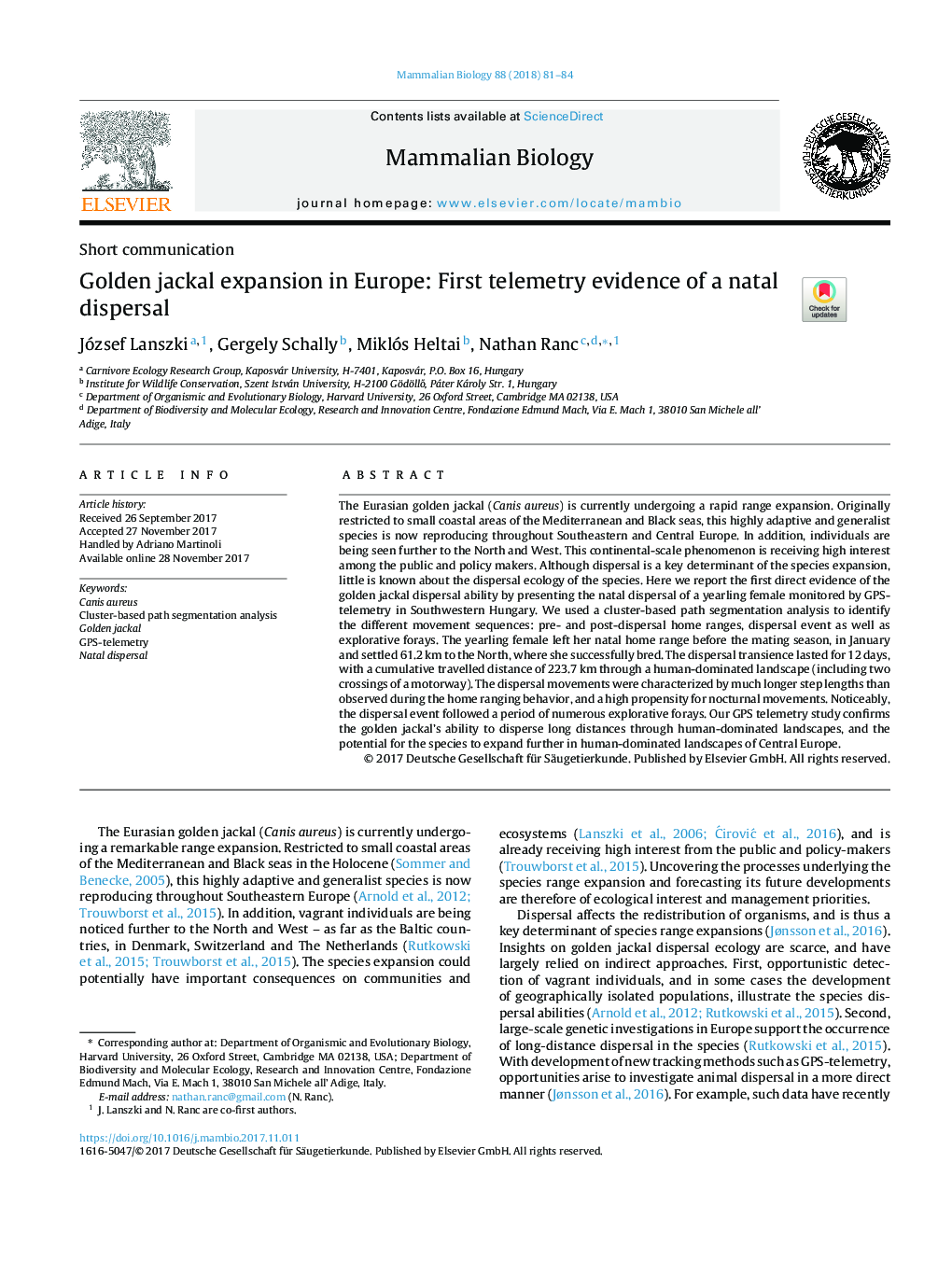| کد مقاله | کد نشریه | سال انتشار | مقاله انگلیسی | نسخه تمام متن |
|---|---|---|---|---|
| 8475757 | 1550459 | 2018 | 4 صفحه PDF | دانلود رایگان |
عنوان انگلیسی مقاله ISI
Golden jackal expansion in Europe: First telemetry evidence of a natal dispersal
ترجمه فارسی عنوان
گسترش شکلات طلای اروپا: نخستین شواهد تله متری در مورد پراکندگی زایمان
دانلود مقاله + سفارش ترجمه
دانلود مقاله ISI انگلیسی
رایگان برای ایرانیان
موضوعات مرتبط
علوم زیستی و بیوفناوری
علوم کشاورزی و بیولوژیک
علوم دامی و جانورشناسی
چکیده انگلیسی
The Eurasian golden jackal (Canis aureus) is currently undergoing a rapid range expansion. Originally restricted to small coastal areas of the Mediterranean and Black seas, this highly adaptive and generalist species is now reproducing throughout Southeastern and Central Europe. In addition, individuals are being seen further to the North and West. This continental-scale phenomenon is receiving high interest among the public and policy makers. Although dispersal is a key determinant of the species expansion, little is known about the dispersal ecology of the species. Here we report the first direct evidence of the golden jackal dispersal ability by presenting the natal dispersal of a yearling female monitored by GPS-telemetry in Southwestern Hungary. We used a cluster-based path segmentation analysis to identify the different movement sequences: pre- and post-dispersal home ranges, dispersal event as well as explorative forays. The yearling female left her natal home range before the mating season, in January and settled 61.2Â km to the North, where she successfully bred. The dispersal transience lasted for 12Â days, with a cumulative travelled distance of 223.7Â km through a human-dominated landscape (including two crossings of a motorway). The dispersal movements were characterized by much longer step lengths than observed during the home ranging behavior, and a high propensity for nocturnal movements. Noticeably, the dispersal event followed a period of numerous explorative forays. Our GPS telemetry study confirms the golden jackal's ability to disperse long distances through human-dominated landscapes, and the potential for the species to expand further in human-dominated landscapes of Central Europe.
ناشر
Database: Elsevier - ScienceDirect (ساینس دایرکت)
Journal: Mammalian Biology - Volume 88, January 2018, Pages 81-84
Journal: Mammalian Biology - Volume 88, January 2018, Pages 81-84
نویسندگان
József Lanszki, Gergely Schally, Miklós Heltai, Nathan Ranc,
